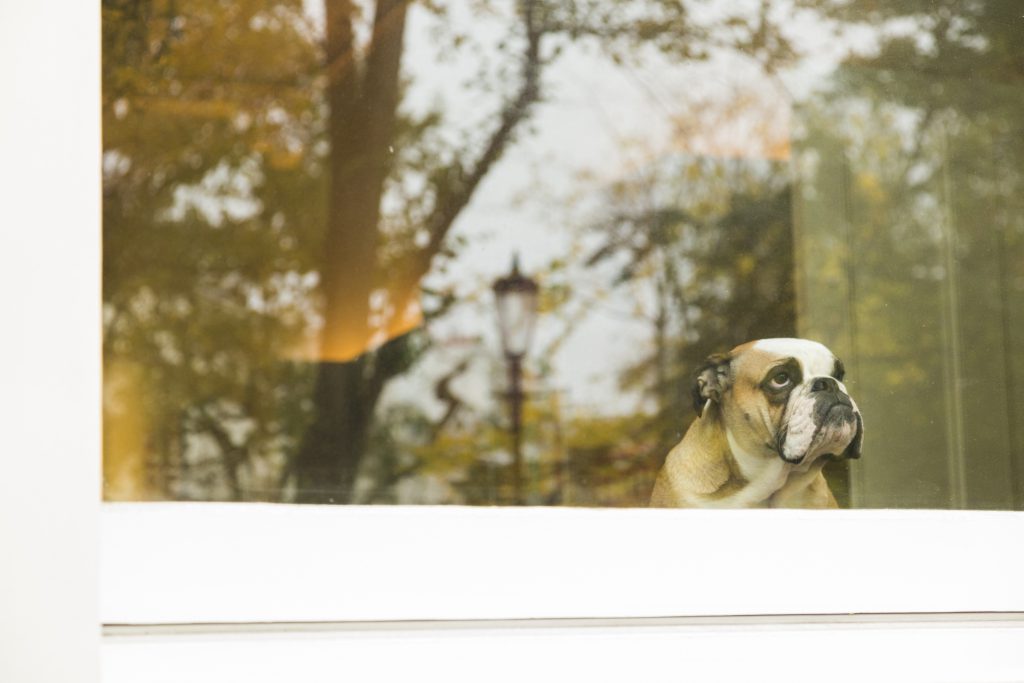Every year, more than 500,000 pets are impacted by house fires—and tens of thousands lose their lives. But with a few smart safety precautions, you can help protect your pets from danger and even prevent fires from starting in the first place. In this guide, we’ll cover practical fire safety tips for pet owners and how monitored detection can make a life-saving difference.

Pets don’t just fall victim to fires—they can sometimes start them. According to the National Fire Protection Association (NFPA), pets are responsible for nearly 1,000 home fires each year. It’s a scary thought, but there are easy steps you can take to prevent accidents and keep your home safe.
Luckily, there are plenty of ways to protect against house fires. We’re going to give you some proactive steps to not only help protect your pet from fires but to also possibly stop your pet from starting one. Read on to get some fire safety tips!
Real Story: A Pet Accident Nearly Caused a House Fire
A monitored smoke detector saved Patty A.’s life—and her home. When her cat accidentally turned on the stove, a toaster caught fire in the kitchen. Thanks to Guardian’s 24/7 monitored smoke detector, the fire was detected immediately and firefighters were dispatched within minutes. No one was hurt, and the damage was minimal.
“Early in the morning, I heard my alarm go off while I was still in bed. I instantly felt panicked, but Guardian called me right away. I assumed someone had broken in; I had no idea there was a fire in my kitchen at that exact moment until the Guardian operator told me!
He requested help, and there were two fire trucks outside my home within minutes. The firemen determined my cat must have turned on the knobs on my stove, which caught my toaster on fire. If Guardian hadn’t installed a 24-hour monitored smoke alarm in the back area of my house near the kitchen, the fire never would have been caught so soon. Guardian’s help meant the world to me, and the operator did a great job calming me down. No one was hurt; the damage was limited to my toaster, and I now have childproof knobs on my stove! I am so grateful to Guardian for saving my home and my life.”
Patty A., PA
Fire Safety Tips for Pet Owners:
- Consider stove knob covers to prevent pet-triggered fires
- Install smoke alarms on every level of your home
- Test smoke alarms at least once a month
- Choose monitored smoke detectors for professional response 24/7
- Never leave pets unattended around open flames or stoves
Pet-Proof Your Home Against Fire Hazards
Pets are naturally curious — which can be risky when it comes to stoves, candles, or electrical cords. Here’s how to reduce the chances of fire-related accidents:
- Use childproof stove knob covers or remove knobs when not in use
- Keep pets off countertops and away from kitchen surfaces
- Never leave pets unattended near open flames or fireplaces
- Use flameless candles or keep real ones out of reach
- Hide or cover electrical cords to prevent chewing
Include Pets in Your Fire Safety and Escape Plans
Don’t wait until disaster strikes—have a plan in place for your pets:
- Practice fire drills with your pets so they respond when called
Keep leashes and carriers by the door - Know your pet’s hiding spots so you can alert firefighters
- Microchip your pets and use ID tags in case they run
- Never delay evacuation for a pet—but leave doors open when safe to do so
Use a Pet Alert Window Cling
Place a cling on a front-facing window that lets emergency responders know pets are inside. It’s a small step that could help save your pet’s life if you’re not home — or unable to re-enter safely.

Protect Your Family Pets
Fire safety is part of responsible pet ownership. When pets are home alone, they can’t escape or call for help. With preventive steps, a well-rehearsed escape plan, and monitored smoke detectors in place, you can help ensure your pets stay protected — no matter what.
FAQ
What are the most common ways pets start house fires?
Pets can accidentally start fires by knocking over candles, turning on stove knobs, or chewing electrical cords. Stovetop fires are especially common, so using knob covers or removing knobs entirely when not cooking is recommended.
How can I protect my pet if a fire breaks out when I’m not home?
Monitored smoke detectors are the best way to ensure your pet’s safety while you’re away. These systems notify a monitoring center that can dispatch emergency services immediately—even if no one is home.
What should I include in my fire escape plan for pets?
Include your pet’s usual hiding spots, keep leashes and carriers by the door, and practice your escape plan with your pet. Train pets to come when called and consider using a pet alert window cling to inform first responders.
Are pet window clings effective during a fire?
Yes, pet alert window clings help firefighters know there are animals inside. They’re especially important if you have to evacuate without your pets, as they inform emergency personnel who might be able to help rescue them.
Can Guardian Protection help with pet fire safety?
Absolutely. Guardian Protection offers monitored smoke detectors and other home security tools that protect both people and pets. These systems can alert emergency services even when you’re not home, providing extra protection for your furry family members.

